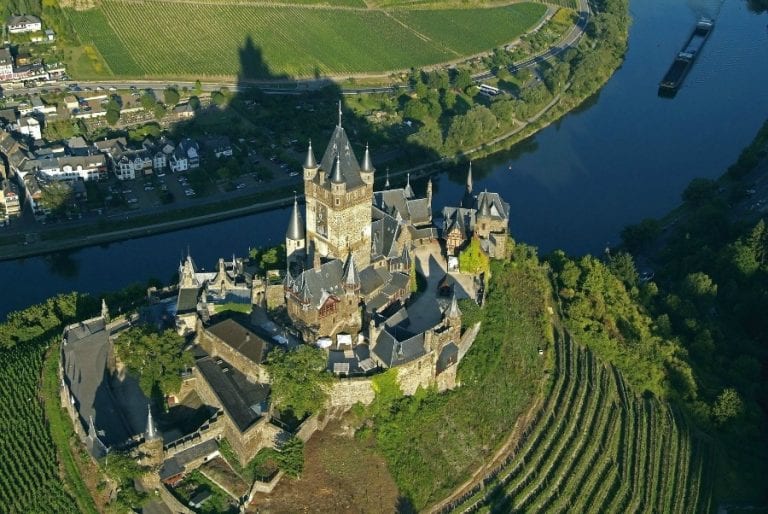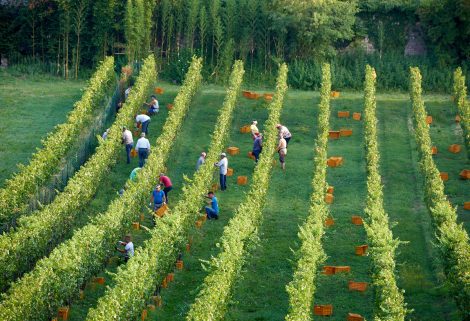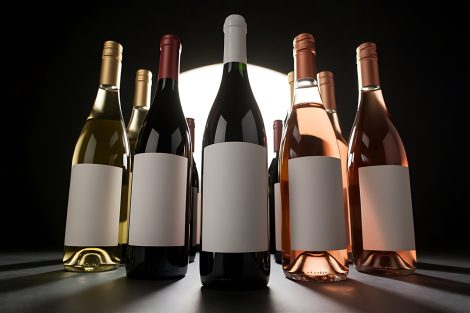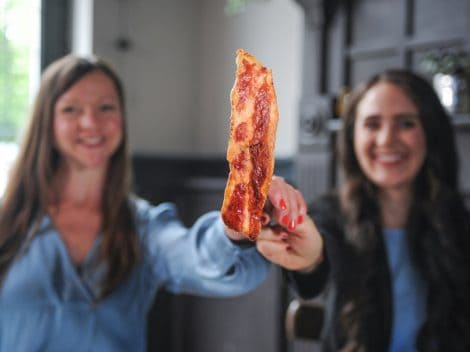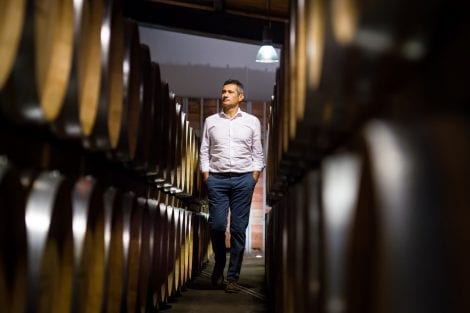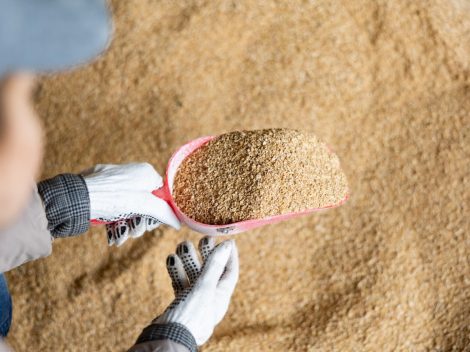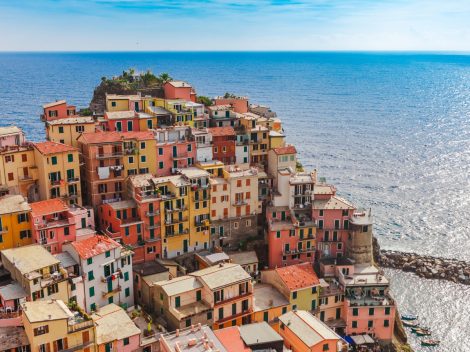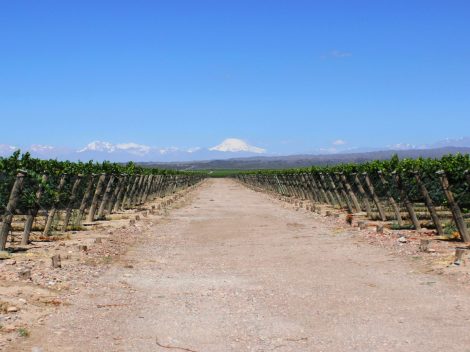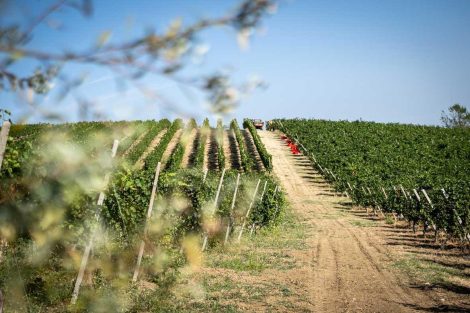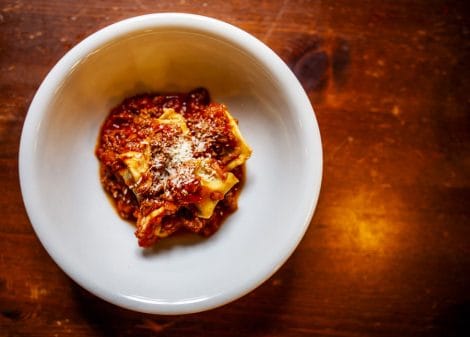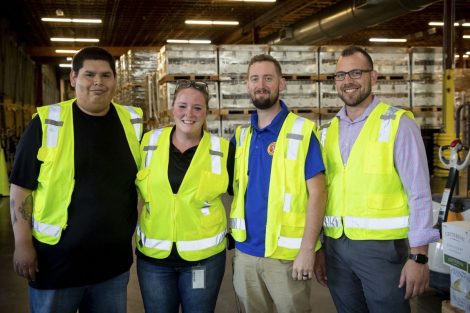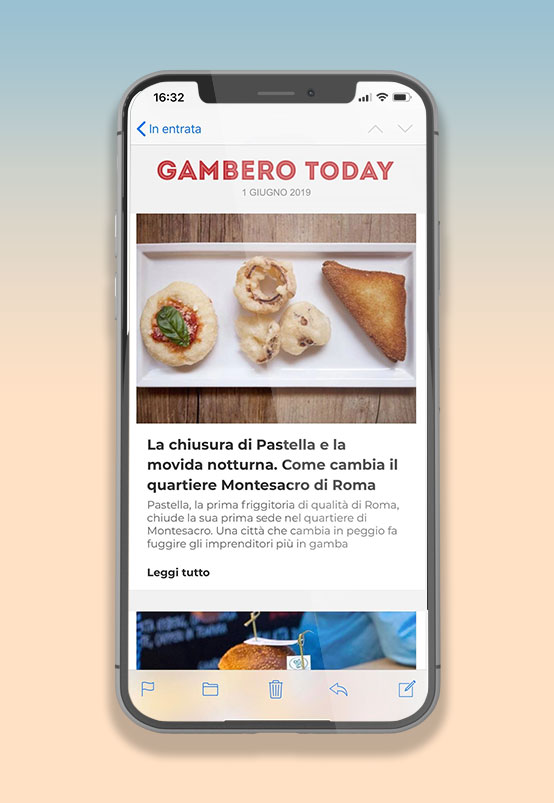Mosel, the land of Riesling
The Mosel has always had a place in the hearts of expert and passionate wine lovers, both for its quality and the longevity of its Rieslings. After a crisis in the 1980s, the valley is rapidly repositioning itself on the world’s markets. The credit goes to a handful of careful and farsighted producers such as Ernst Loosen, Egon Muller and Markus Molitor, to name only few. At the right moment they knew how to invest both in their wineries, making them more competitive, and in promoting their wines on the great international markets. In this way, they created a virtuous cycle that, in the last decade, has brought German Rieslings impressively back on the scene. Until the 1960s, they had been asexpensive and sought as Bordeaux wine, even in France. We found a region of wildly differing views. Two opposing production philosophies vie for predominance. On one side are producers more committed to traditional vinification. On the other are those that move towards drier wine, even ones with no sugar residue. The same discussion goes for Botrytis – noble rot. Some flee from it and other believe that without its contribution, wines lose in balance and general complexity.
Botrytis: friend or enemy?
Sofia Thanisch is the great-granddaughter of the legendary Katharina who, in 1895, inherited the winery and, although only 29 years old, made it one of the reference points of the entire Mosel valley. Sofia said she normally tried to avoid Botrytis, choosing, when required, the most concentrated berries instead. Markus Molitor also prefers to vinify without Botrytis. “That way the wines better express the intrinsic character of the grape variety, the terroir and the vintage year. It’s very important,” Markus continued, “to do good work in the vineyard. It starts with pruning, which has to be delicate and leave a large leaf wall that defends the grape from both heat and cold.” But Thorsten Melssheimer, a young producer in Reil, said, “It’s complicated to vinify without Botrytis because a minimal percentage develops anyway, even in the best years. To make great wines, the grower has to be in harmony with nature as much as possible. That’s why I am a convinced sustainer of biodynamic farming. It brings out the character of each single variety and helps me find the right style for each wine.” Martin Müllen has another recipe for showcasing his grapes. From his four hectares of Riesling vines, many of them a century old and ungrafted, each year he produces from 25 to 30 different wines. “Only by vinifying vineyard by vineyard,” Martin said, “can you bring out the terroir and show off the peculiarities of the individual crus. In the ungrafted vineyards, for example, spiciness is more evident. Even if the plants are less vigorous, thanks to the superior quality of the grapes, we obtain more elegant and deeper wines.”
Organic agriculture and sustainability
Since 2005, Olivier Haag has run the winery founded by his father, Fritz. His Reislings have a delicate, elegant character. His wines achieve great longevity and are among the most sought after in region. A convinced proponent of sustainability, he practices ecologically healthy agriculture. “I work the vineyard in an artisanal way. We even do the harvesting by hand. That is the only way,” Olivier believes, “you can have the best possible management of ripening and harvesting times, and thus an overall improvement in grape quality. We intervene as little as possible in the cellar. We let the must ferment spontaneously and without the use of added yeasts.” Clearly, the region is in healthy turmoil and faces problems with finding a specialized work force to manage the zone’s very steep slopes. A slate substrata makes the vineyards even more challenging. Despite conflicting philosophies and production styles, however, the zone seems to have overcome the crisis of the 20th century and is moving together to win back the rightful recognition for a region renowned for its great ageworthy white wines.
Ernst Loosen: Riesling and the archeologist
Innovation inspired by the past – this is Ernst Loosen’s philosophy. Starting off as an archeology student, he has become Germany’s most famous Riesling producer. Ernst’s first intuition was to increase the size of the winery’s patrimony by buying old vineyards, sometimes a century old, on a vast scale. Among them was one that, in 1908, a venerable document, not official, declared to be a grand cru. In his cellar, adopting the theories of his grandfather who, in the first decades of the 20th century, made only dry wines in Urzig, Loosen began vinifying his riesling grapes by simply leaving them on their skins as long as possible, without doing anything else before bottling. This philosophy led to his latest visionary goal, to produce a Riesling destined to age on its fine lees for 20 years, just as his grandfather had theorized. Loosen’s international success was consolidated over the last decade by two American partnerships, with Chateau Ste. Michelle in the state of Washington and Jay Somers in Oregon. Loosen also purchased the Villa Wolf estate in the Pfalz region of Germany.
Climate and Vineyard 2015 and 2016, two excellent vintage years
In 2016, there were no particular problems of frost in the Mosel, as there were in other parts of Europe. After a spring and early summer of rain and humidity, fine weather finally arrived in August and September, balancing a year that had seemed to be heading for the worst. Even if the harvest was somewhat smaller than that of 2015, the grapes ripened well, maintaining a good degree of acidity. The 2015 vintage can be counted among one of the best in recent years. Although in July and August, temperatures were fairly high, September rain mitigated the effect of the summer heat. October and November were beautiful. The harvest went smoothly and was completed before the winter rains set in. The wines of 2015 display a perfect balance between ripe fruit and acidity, and are destined to evolve extremely well over time.
Wine and Wineries
Weingut Maximin Grünhaus Von Schubert
Abtsberg Riesling Spatlese 2014
The grapes for this wine come from a vineyard whose bottles were once reserved exclusively for the Abbot. It is the most important plot belonging to this winery known for the slate blue color of its soil. Generous nose with floral and tropical fruit aromas, fragrances of Mediterranean herbs, sorrel and thyme in particular. The palate is citrusy and slightly saline, balancing sweet and juicy fruit.
Abtsberg Riesling Superior VDP Grosse Lage 2015
Grapes have been growing on the Abtsberg hill for more than 1,000 years, and its 14 hectares of vineyard are noteworthy for steep slopes that reach 70%. The wine is very complex on the nose, where floral, spicy and mineral scents abound along with elegant, fresh minty ones. Fruit then explodes on the palate, enhanced by crystalline acidity that amplifies its persistence in the mouth.
Herrenberger Riesling Superior VDP Grosse Lage Trocken 2015
The nineteen hectares of Herrenberger are also characterized by very steep slopes while the soil is rich in red slate. Generous and well-articulated, the bouquet ranges from spices to white-fleshed fruit scents, from grapefruit to anise and mineral notes that suggest pumice. In the mouth, a fresh acidic rush reins in pulpy, sweet fully ripe fruit sensations.
Weingut Maximin Grünhaus Von Schubert | Hauptstrasse, 1 | D-54318 | Mertesdorf | tel.+49 (0)651 5111 | www.vonschubert.de
Weingut Fritz Haag
Brauneberg Juffer Sonnenuhr Riesling Troken GG 2015
Juffer Sonnenuhr is the most valuable part of the famous Brauneberg vineyard. Intense and persistent, its generous range of fragrances offers mineral notes, spices, evergreen resin, citrus fruit, peach and sweet floral aromas. The approach to the palate is extremely fresh and then opens onto tonic, perfectly ripe fruit. Citrus fruit tones return on a long, dynamic, persistent finish.
Brauneberger Riesling Feinherb 2015
The term Feinherb is used for demi-sec wines: in this case, residual sugar amounts to 17 grams per liter. The first notes on the nose suggest smoked salt, apricot and loquat. After a few seconds in the glass, nuances of ferns, wild flowers and spices emerge. The fresh, savory flavor demands a next sip.
Brauneberger Juffer Sonnenuhr Riesling Auslese Goldkapsel 2015
The balance between 13 grams of acidity, 135 of residual sugar and only 7.5 degrees of alcohol in this wine has something miraculous about it. The nose is superbly elegant, with notes of citron, candied pineapple, aromatic herbs, yellow spices, chamomile and lime flowers. The palate is agile and perfectly balanced, sweet and creamy, energized by a still vibrant acidic backbone that holds it taut through the entire, long, long finish.
Weingut Fritz Haag| Dusemonder strasse, 44 | D-54472 | Brauneberg | tel. +49 (0)6534 410 | www.weingut-fritz-haag.de
Weingut Schloss Lieser
SL Kabinet Trocken 2016
Thomas Haag can draw on 22 hectares of vineyard spread over 25 kilometers, eight different grand crus in a total of 150 different parcels. This entry level bottle is very pleasant, with lovely mineral tones that resemble flint stone and provide a backdrop to a bouquet rich in floral notes, white-fleshed fruit aromas, citrus fruit and Mediterranean scrub. The palate is very pleasant, elegant and substantial, well balanced between savory and fruity nuances. A fine long finish, fresh and citrusy.
Juffer Kabinet 2016
Dense and persistent fragrances in a wine that opens on a nose of intense smoky and mineral notes. They slowly leave space for aromas of white flowers, balsam, citrus fruit, a riot of apricot and peach. In the mouth, an energetic acidic thrust is well harmonized with clean, round fruit. The finish is long, satisfying and fruity.
Doctor Auslese 2016
In the first years of the 20th century, Doctor was considered the costliest cru in Germany. At the time, a square meter of land sold for the sum of 100 gold marks, the equivalent today of a million euros per hectare. It is very heterogeneous on the nose, with mineral notes of pencil lead, mock orange blossom, yellow apple, nectarine, blood orange, mango and fresh balsamic nuances of mint. The mouthfeel is velvety and vitalized by savory, fresh acidity with unusual equilibrium that never tires the palate, despite much unresolved sugar.
Weingut Schloss Lieser | Thomas and Ute Haag | Am Markt 1-5 | Lieser | tel. +49 (0)6531 643 |www.weingut-schloss-lieser.de
Weingut Dr. H. Thanisch
Bernkasteler Lay Riesling Feinherb 2014
Lay, in ancient Gaelic, means slate, in particular that Bernkasteler Lay, the classic slate blue found in many other vineyards in the Mosel. Fragrant and elegant on the nose, it offers mineral scents, aromas of orange blossom, green tea, citrus fruit, tropical fruit, and light balsamic notes that suggest eucalyptus. It is aromatically well-defined on the palate, in good equilibrium between sweet sensations of fruit and mineral sapidity. On the long finish, a fresh balsamic note peeks out.
Bernkasteler Doctor Riesling Kabinett 2015
Legend tells us that this extremely steep Bernkastel vineyard is called Doctor because in the 14th century the wine from here cured the gravely ill Boemund II, the lord of Trier. Extremely elegant and dense, the bouquet displays jasmine and wisteria, pink peppercorn, hints of smoke, yellow-fleshed fruit and thyme. The balance between almost 70 grams of residual sugar, acidity, and only 8° of alcohol is simply amazing. In the mouth, refined, substantial texture conquers the palate, leaving a long, rich finish of fruity sensations.
Bernkasteler Doctor Riesling Spatlese 1997
Delicious, generous and complex on the nose, where only a subtle, gentle vein of hydrocarbon reveals the passage of time. The bouquet offers aromas of citrus fruit, tropical fruit, peach, candied citron, mentholated balsamic notes and aromatic herbs. In the mouth, it is soft but taut at the same time, with a still-vital charge of fresh energy that envelops the fruit, spreading it all over the palate. A very long finish is punctuated by citrus and balsamic notes.
Weingut Dr. H. Thanisch | Junkerland, 14 | 54470 | Bernkastel-Kues | tel. +49(0) 6531 9179010 | www.drthanisch.de
Weingut Markus Molitor
Wehlener Klosterberg Spatlese Grüne Kapsel 2015
Markus Molitor’s wines have capsules of three different colors, according to their sweetness (white, green, gold). The green capsule signals semi-dry wines. The approach to the nose suggests just-harvested aromatic herbs. Then mineral fragrances begin to emerge, along with tropical fruit, yellow flowers, mandarin oranges and lavender. The mouth opens out agilely and elegantly, thanks also to full, persistent structure that plays counterpoint to still very nervous acidity.
Bernkasteler Lay Auslese ** Weiße Kapsel 2015
The white capsule identifies dry wines, while the stars (from one to three) indicate the rating Molitor assigns to that specific wine in that vintage year. A wide-ranging olfactory profile includes stony mineral notes, floral nuances, pink grapefruit, yellow apple and tropical fruit.
The palate opens up elegantly, well balanced between fruit and sapidity, punctuated by progression imposed by a powerful acidic current. A long, spicy finish.
Zeltinger Sonnenuhr Auslese*** Weiße Kapsel 2015
This wine captures attention immediately thanks to its brilliant golden highlights, but it definitively conquers thanks to an elegant bouquet of yellow flowers, tropical fruit, saffron, biscotti, anise and medicinal herbs, but also peppery spices that chase each other in a whirl of extraordinarily abundant and persistent olfactory sensations. A substantial and fruity mouth is firmed up by important and still vibrant acidity, while the finish leaves a marked citrus fruit note on the palate.
Weingut Markus Molitor | Haus Klosterberg | 54470 | Bernkastel-Wehlen | tel. +49 (0)6532 954000 | www.markusmolitor.com
Weingut Dr. Loosen
Graacher Himmelreich GG 2015
Himmelreich (heaven’s reign) is an ungrafted vineyard planted over 100 years ago in Graach, one of the most beautiful zones of the Mosel. Refined and complex on the nose, it displays nuances of elderberry, gardenia, Mediterranean herbs, yellow-fleshed fruit and citrus fruits. Impressive impact in the mouth, taut and with long aromatic persistence, with lovely citrus fruit sensations that accompany the palate right through to a long, very fresh finish.
Urziger Wurzgarten Riesling Trocken GG alte Reben 2015
Wurzgarten, or spice garden: the wines that emerge from the red slate of this hundred-year old vineyard are particularly fragrant. This wine too has a wide aromatic spectrum of jasmine, wisteria, mint, yellow spices, mandarin orange, loquat, ripe apricot, and even a delicate note of black currant. In the glass, vibrant acidity never releases its hold on well-ripened fruit, making the wine decidedly pleasant to drink even now.
Wehlener Sonnenuhr Riesling Trockenbeerenauslese 2006
The Trockenbeerenauslese type is very rare in the Loosen maison. The winery produces very few bottles and only in particularly favorable vintage years, on the average, twice a decade. The nose is dense with candied citron, dates, beeswax, lavender, cream, turmeric and other spices, honey. The mouthfeel is creamy but not at all cloying thanks to the tension created by acidity impressive for a meditation wine. The finish is very long, enhanced by fresh citrus and balsamic notes.
Weingut Dr. Loosen | St. Johannishof | 54470 Bernkastel | tel.+49 (0)6571 146314| drloosen.de
Weingut Melsheimer
Reiler Mullay Hofberg Riesling Kabinett 2015
Records of the Reiler Mullay vineyard date back to 1143 and a donation to the convent of Springierbach. The land is extremely steep and rich in red and grey slate. It has always been famous for the elegance of its wines. This bottle is no exception: mineral, floral, citrus and tropical fruit fragrances open on the palate in perfect equilibrium between fruit and fine acidity that lends vitality, accompanying the palate all the way to a long and juicy finish.
Lentum 2013
Lentum: this wine is left on its lees for 36 months in 1,000-liter oak barrels. No other type of intervention occurs except for topping up when necessary. The result is a wine of amazing equilibrium, with aromas of yellow-fleshed fruit, clementines and spices. In the mouth it is vibrant, juicy with ripe fruit, fresh tasting and citrusy. It offers admirable sapidity that gives lift and energy to each sip.
Molun 2015
All Melsheimer’s wines are vinified in barrels that are at least 5o years old, where they rest on their fine lees for at least a year. Molun (the ancient name of the Mullay hill) offers the nose intense aromas of nectarine and apricot, peppery spices, gardenia blossoms, and a subtle mineral note that frames the pleasant aromatic spectrum. The palate is fresh, savory, and well-balanced between acidic tension and structure. The finish alternates between fruit and sapidity.
Weingut Melsheimer| Dorfstrasse 21 | D-56861 | Reil an der Mosel | tel. +49 (0)6542 2422 | www.melsheimer-riesling.de
Weingut Martin Muellen
Trarbacher Hühnerberg Riesling Spätlese trocken 2015
In Trarbacher Hühnerberg, Martin Muellen owns two hectares in the highest, steepest part of the vineyard. Most are hundred-year-old ungrafted vines. On the nose, floral and fruity notes become ampler and complex; after a while, spicy and balsamic notes appear. The palate is well managed: rich, juicy full of vitality and length with great aromatic persistence.
Kröver Paradies Riesling Spatlese* 2015
Kröver Paradies lies in the center of a narrow turn of the Mosel between the villages of Kröv and Wolf. Martin Muellen owns three small vineyards totaling a little more than a hectare. The wine is elegant on the nose, with aromas of herbs and wild mountain flowers, but also spices and yellow-fleshed fruit, delicately framed by mineral, iron-like sensations. In the mouth, it is fat and structured without losing tension and without slipping into the cloying. It maintains throughout enviable drinkability.
Kröver Steffensberg Spatlese Riesling Trocken 2000
Since the Kröver Steffensberg vineyard amounts to little more than 1,000 square meters, they make very few bottles of this wine. On the nose the range of aromas is ample and complex: minerality, tropical fruit, apple, green peppercorns, lemongrass, balsamic and Mediterranean brush notes follow each other in continual evolution. In the mouth, excellent acidity bestows the right energy on the wine to fill the palate well, amplifying an aromatic range that is already noteworthy.
Weingut Martin Muellen| Alte Marktstrasse 2 | Traben-Trarbach | tel. +49 (0) 6541 9470 | www.muellen.de
by Massimiliano Rella

